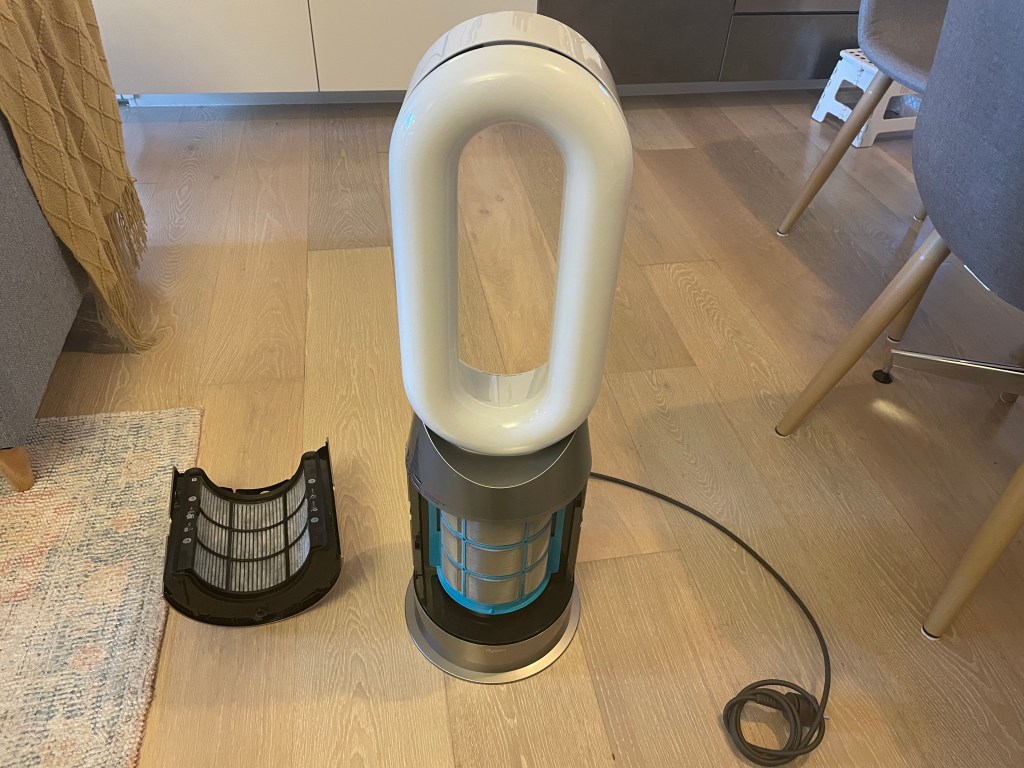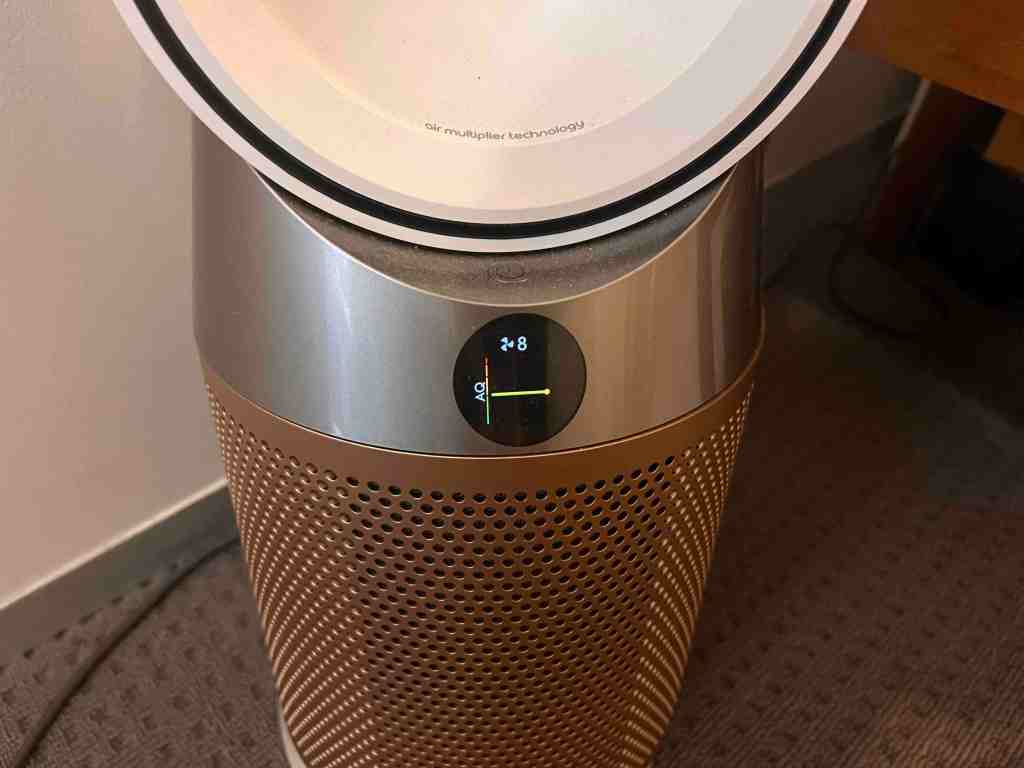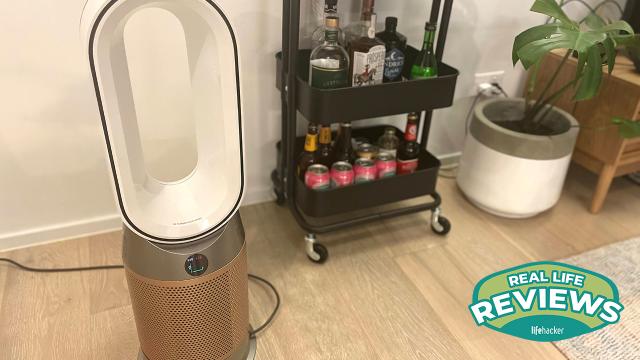Dyson dropped its latest generation of air purifiers – the Purifier Formaldehyde range – in early 2021, boasting 20 per cent quieter airflow and state of the art air-purifying technology, designed to capture ultra-fine dust and allergens down to the level of formaldehyde (which is a not-so-fun odourless gas found in many household items).
The release hinged off the back of worldwide conversations around air purity linked to the COVID-19 pandemic and Australia’s devastating bushfire seasons, suggesting that folks were (and still are) pretty interested in what they were breathing in both inside and outside their homes.
Alex Knox, Vice President of Environmental Care at Dyson said at that time that:
“The off-gassing tendency of formaldehyde means that it can go undetected in a home for years. Dyson has engineered a machine that provides accurate and successful sensing, capture and destruction of the pollutant. Our solid-state sensor doesn’t dry out over time, lasting the lifetime of the machine.
“The COVID-19 pandemic has raised global awareness about the air that we breathe and Dyson’s commitment to providing cleaner air through innovation and technology remains at the forefront of our mission.”
I have had the pleasure of testing out one of Dyson’s Hot+Cool Formaldehyde purifiers over the past few months; using it mostly to manage the temperature in my apartment. But my experience with the device became particularly interesting when I caught COVID in December 2021.
Dyson Hot+Cool Formaldehyde Purifier review
I’ll give you the rundown of my thoughts on the air purifier in a moment, but first, here are some specs for you.
The key features for the Hot+Cool Formaldehyde purifier, as highlighted by Dyson, include:
- Removes 99.95% of particles as small as 0.1 microns
- Purifies and heats the whole room
- Sealed to HEPA standard – what goes inside, stays inside
- Smart purification, controlled by app or voice
- Senses and reports, automatically
- Destroys formaldehyde in billions of catalytic tunnels
- Air Multiplier Technology – fast, even room heating
- Night mode
- Priced at $1,099 (currently sold out on Dyson website but available at The Good Guys)
Now, onto my experience.
What’s good?

Okay, so there are a few stand out elements for the Dyson Hot+Cool Formaldehyde purifier. Firstly, the device is surprisingly light for its size, meaning that moving it from room to room (if you need to) is quite easy. It’s also a breeze to set up – it comes in one piece and the filters click in and out of place with little trouble.
Also, the classic blade-less design Dyson has come to be known for is always a neat feature, removing the risk of hair or hands getting caught up in the fan’s movements.
When it comes to actually cooling or heating a room, the claims of even airflow are pretty bang on for me. I find I can set the purifier to an automatic rotation setting, and most corners of the space will be reached. The Air Multiplier tech is another nice feature, ensuring the purifier stops heating or cooling when your desired temperature is reached.
You can use the Dyson app to check in on your room’s status, or to control the purifier, which is a nice addition – but I do often find there are connection issues because of my terrible WiFi so I tend to stick to the remote.
The Night Mode feature is really useful if you’re a hot (or cold) sleeper and you want some gentle airflow to keep you comfortable, with a dimmed display to avoid messing up your snooze. I absolutely lived for this feature when I became sick with COVID in December and was burning up in my bedroom.
The purifier also helped keep my room from feeling stale while I spend my iso time in there for 10 days. Speaking of my COVID experience, another plus was that whenever I sprayed disinfectant or similar I could check the settings on the purifier’s app to see the air quality around me – pretty cool.
Then there’s the whole discussion about whether or not these purifiers help with airborne viruses at all. I can’t speak to the science or efficacy of that, but I will say it kind of felt comforting to know I had fresh air circulating the whole time.
Moving on to every day life, whenever I spray a product like disinfectant into the air, the purifier will begin to highlight the change in air quality on its display screen (you can use the Information button on the remote to cycle through each option). Where the air quality once showed up green, it’ll now usually change to yellow and will highlight the pollutants it is picking up on – down to the level of formaldehyde.
Over time, as the purifier does its thing, the status returns to green.
Just to refresh everyone’s memories, formaldehyde is an odour-free gas you’ll find emitted from elements like paint, wooden furniture or cleaning products. Exposure is said to sometimes cause irritation of the eyes, nose and skin and in some cases, has been linked to more serious health concerns.
Long story, short it’s good to know these kinds of pollutants are not sticking around for too long in your home.
What’s not so good?

Aside from checking the air quality when using bug spray or disinfectant (mostly out of curiosity, honestly) I haven’t really had loads of reasons to use this feature of the purifier. Most of the time when I check in on the app, the air quality is rated pretty highly, so it’s not something I get tonnes of use out of.
In saying that, there is certainly comfort to be found in being able to see the pollutant levels drop in the times I do use the Dyson purifier for this reason.
Dyson Hot+Cool Formaldehyde Purifier verdict
The simple truth here is that this purifier has improved my comfort levels in both warm and cold settings, and has acted as something of a security blanket in the times when I have known that my space has been filled with nasty pollutants.
At over $1,000, however, it’s not a tool that every household is going to be rushing to get – and that’s fair enough. Do you need to see the pollutants in your space to this level? That’s a question for you and your budget.
It certainly offers an excellent experience, which in my opinion does make it worth the investment. But the elements that I got the most out of were the temperature control functions, which you can certainly get at a cheaper price point, too.

Leave a Reply
You must be logged in to post a comment.